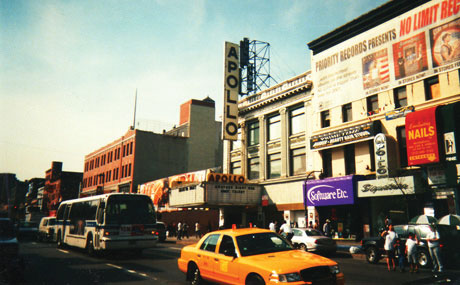
HARLEM RENAISSANCE
NYCGO.COM

Photo: Chris White
Harlem might have started out as a simple Dutch farming village, but since its beginnings in 1658 the area has become a cultural focal point of the City. Sectioned into West, Central and East neighborhoods Harlem's lowest point touches 96th Street and runs up to about 155th spanning the width of Upper Manhattan.
An epicenter of African American culture for more than a century, Harlem started out as Nieuw Haarlem,
a Dutch farming settlement. By the turn of the 20th century the neighborhood prospered and, by the 1920s, Harlem had become the most famous black community in the United States, perhaps, in the whole world. The Harlem Renaissance was Harlem's golden era when local writers such as Zora Neale Hurston, W.E.B. DuBois, Langston Hughes and Ralph Ellison achieved
literary recognition.
A series of boom and bust cycles have brought in various ethnicities over the centuries, but the area is particularly rich with African American historical significance. Greats like W.E.B. Du Bois, Zora Neale Hurston and Duke Ellington are just a few of the famous types who brought the neighborhood to the forefront of American consciousness during the Harlem Renaissance and transformed it into an artistic and intellectual epicenter for blacks.
With many historical sites from this era remaining, the streets still teem with the memories of yesteryear. Lest you forget, its avenues are named after influential figures like Malcolm X and Adam Clayton Powell Jr., both of whom took up residence in the neighborhood. Today, a second renaissance is under way as rapid gentrification, investors and entrepreneurs bring in new businesses. These newcomers add fresh appeal to Harlem and create an even longer itinerary of must see destinations.
Harlem's main thoroughfare is 125th Street where you can find the famous Apollo Theater, a concert venue for luminaries as well as a rite of passage for rising musicians. Count Basie, Bessie Smith, Nat King Cole, Marvin Gaye, Sammy Davis, Jr. and Aretha Franklin have all
performed here.
The Harlem Week/Harlem Jazz & Music Festival is an annual summer festival taking place each August, with food tasting, art exhibits, concerts, seminars, music, street entertainment, sporting events and an auto show. And don't miss The Greater Harlem Historic Bike Tour in early August. The Urban World Film Festival also takes place in August every year. To find out the latest happenings in this neighborhood check out Harlem One Stop or Welcome to Harlem.com.
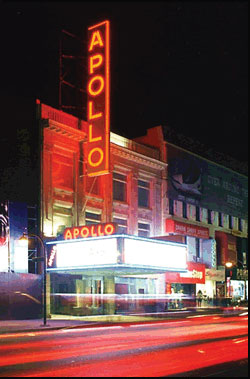
Photo: www.apollotheater.org
As Langston Hughes put it: "There is so much to see in Harlem." Visit Hamilton Grange, the country estate of Alexander Hamilton; Riverbank State Park, with its wonderful carousel and a spectacular view of the George Washington Bridge; the beautiful architecture of City College (CUNY); the lovely row houses of Hamilton Heights, often called Sugar Hill, that have been home to Count Basie, US Chief Justice Thurgood Marshall and boxing great Sugar Ray Robinson; and Strivers' Row, a reference to the upward mobility of the doctors, lawyers and other middle class professionals who purchased homes here on 138th and 139th street
No trip to Harlem would be complete without a visit to the Apollo Theater, a national landmark and longtime staple of Harlem nightlife.
But if the theater is quiet there's always plenty of activity at The Studio Museum in Harlem, a two floor gallery space dedicated to showing the art of local, national and international black artists. The Studio Museum of Harlem is one of the community's showplaces housing a large collection of sculpture, paintings and photographs and specializing in African-American artists as well as artists of African descent. The Schomburg Center for Research in Black Culture, part of the New York Public Library's Division of Negro History on Lenox Avenue, is an eye-popping literary treasure trove.
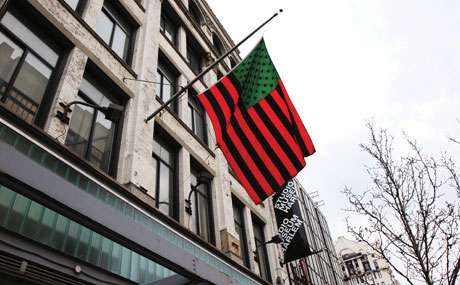
The Studio Museum in Harlem • Photo: Jen Davis
Among the works in the museum's permanent collection: photos by James Van Der Zee who snapped the Harlem scene from the '20s to the '80s.
Another fascinating focal point of Harlem's cultural life is the Schomburg Center for Research in Black Culture, a branch of the New York Public Library.
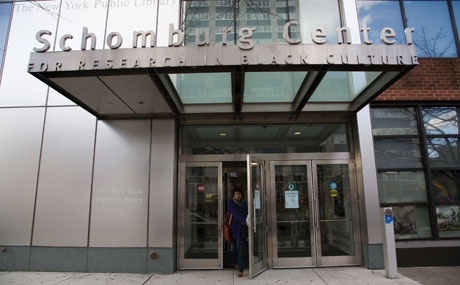
Photo: www.nycgo.com
From Richard Wright's original manuscript of Native Son to the ashes of Harlem Renaissance notable Langston Hughes, the center boasts a massive collection of artifacts, documents and other research resources.
Farther south is Spanish Harlem, the area east of Fifth Avenue from 96th to 125th Streets. Institutions there include El Museo del Barrio, the only museum in New York City dedicated to Puerto Rican, Caribbean and Latin American art.
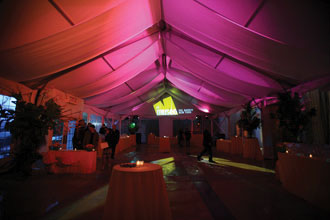
El Museo del Barrio • Photo: www.www.elmuseo.org
Located on Manhattan's Museum Mile, the 40 year old institution manages to pack in about 7,000 permanent works and has featured exhibitions by well known artists like Frida Kahlo. El Museo del Barrio was renovated in 2009 and has reopened with a new café and galleries to host its permanent collection.
Gospel
Any day is a good one to come uptown, but Sundays are, for many, the best time to hear gospel singing at churches like the Gothic style Abyssinian Baptist where the charismatic Adam Clayton Powell once preached, Canaan Baptist, Salem United Methodist and Metropolitan Baptist. Visitors of all races and creeds are given a warm welcome. Please remember to dress appropriately for church. Harlem Spirituals/New York Visions provides gospel, jazz, heritage and ethnic tours.
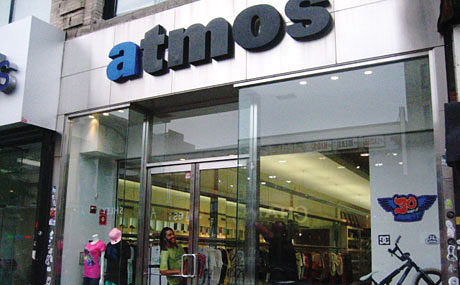
Courtesy, Atmos
Shopping
Harlem's business and cultural hub is 125th Street aka Martin Luther King Jr. Boulevard. The stores that line the road offer a slew of urban apparel options, but sneaker fans should pay special attention to Atmos, a boutique from the Tokyo based footwear company. A wide selection of special edition sneakers, clothing and accessories are available here along with collaboration projects with giants like Nike, Levi's and The North Face. That's not even to mention the company's eponymous line which also contributes to the kaleidoscope of products on shelves.
Those whose tastes veer to high end brands should check out N Boutique which is stocked with menswear and womenswear from the likes of Rock & Republic, Tracy Reese and Paul Smith.
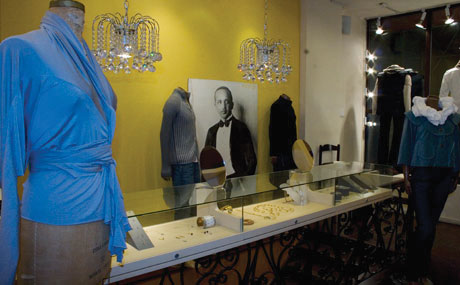
N boutique • Photo: Dana Perrotti
If you're looking for deals there are plenty of bargains to be found in the shops and from the vendors along 125th Street featuring everything from oils and incense to CDs and artwork. Find even more discounts at the Malcolm Shabazz Harlem Market on 116th,in an outdoor flea market style setting where vendors negotiate deals on African crafts, textiles and clothing as well as jewelry, hair braiding services and souvenirs.
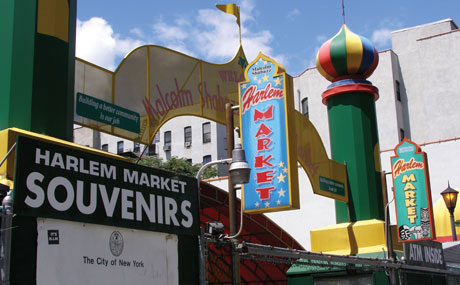
Malcolm Shabazz Harlem Market • Photo: jag9889
Nestled along Riverside Drive and just a few blocks away from the popular Dinosaur Bar-B-Que, the Hudson River Cafe brings a hip, atmospheric vibe to its industrial surroundings.
Spend a lazy Sunday listening to live jazz while lingering over unlimited mimosas or Bellinis either of which come with the diverse options on the prix fixe brunch menu. In spring or summer dine alfresco on the massive outdoor terrace, or make reservations to catch the view on the upstairs patio.
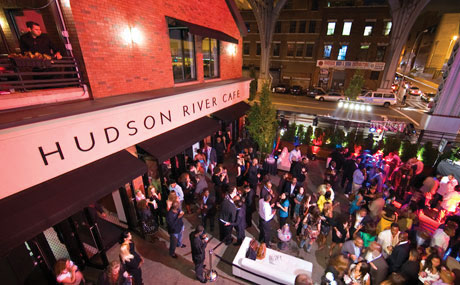
Courtesy, Hudson River Cafe
If you're more interested in traditional fare consider some of Harlem's tastier soul food options like Sylvia's Restaurant and Miss Mamie's Spoonbread Too.
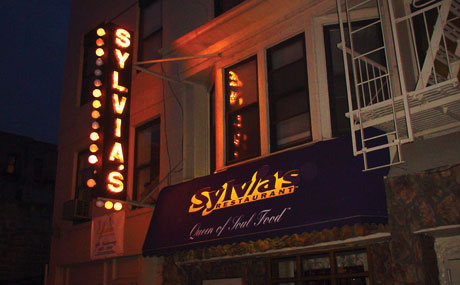
Photo: Alan Lew
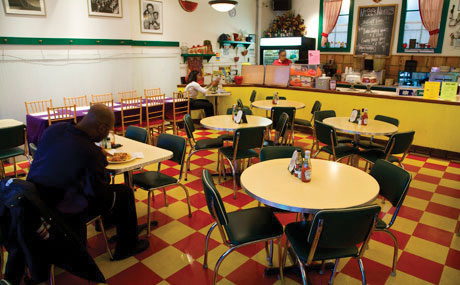
Miss Mamie's Spoonbread Too • Photo: Phil Kline
Amy Ruth's is another standout that offers Southern style eats. Fried whiting, macaroni and cheese and collard greens are just a few of the savory dishes that make up the menu which also features items named after local celebs. "The Rev. Al Sharpton" is a chicken and waffle plate. The restaurant even has extended weekend hours with a 5:30am closing time on Fridays and Saturdays, it's one of the few eateries in the area to go to for an after hours meal.
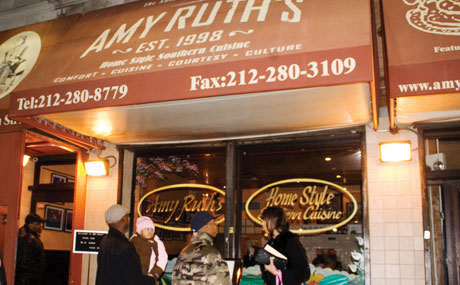
Photo: Dana Perrotti
On the east side, carryouts, food carts and small restaurants imbue Spanish Harlem with some of its Caribbean and Latin American flavor. You can find cheap eats at a taquería on any corner, but Amor Cubano on Third Avenue and East 111th Street is an enticing sit down option.
The traditional Cuban restaurant has a vibrant decor and a very friendly waitstaff. They'll dance right alongside the diners during evenings when the eatery hosts live music.
If the music's too loud, ask to sit in the restaurant's back dining room where you can try the garlic and tomato braised ropa vieja, or a fresh, delicious mojito in peace.
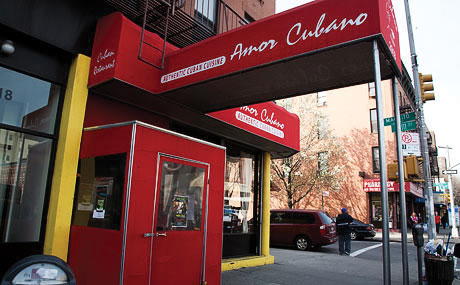
Photo: Phil Kline
Harlem's nightlife scene has been jumping and grooving since the days of Jungle Alley, a 133rd Street stretch that was home to a number of famous clubs in the '20s and '30s, the Cotton Club, Connie's Inn and Small's Paradise among them. Those looking to experience the feeling of that era should head to Lenox Lounge which dates back to 1939.
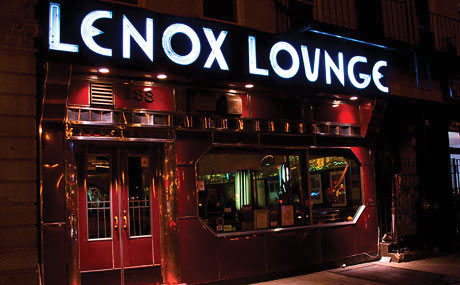
Courtesy, Lenox Lounge
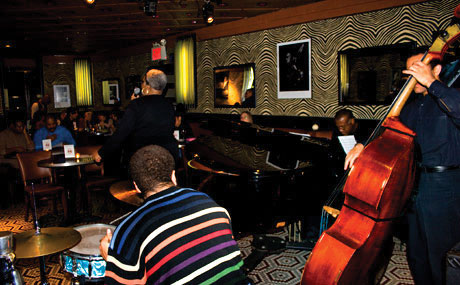
Courtesy, Lenox Lounge
Greats like Billie Holiday, Miles Davis and John Coltrane used to routinely bring down the house, and the art deco nightspot still offers up live jazz in its Zebra Room today. Other notable venues include St. Nick's Pub, originally called Lucky's Rendezvous and founded a year after Lenox Lounge by Duke Ellington's piano player, Luckey Roberts, and Bill's Place, offering an intimate setting to hear saxophonist Bill Saxton and his All Star Quartet.
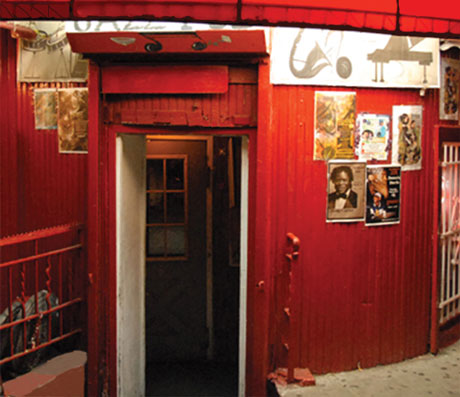
Photo: www.stnicksjazzpub.net
For a younger, hipster crowd the neighborhood's burgeoning bar and lounge scene provides a reason to party above 110th Street. With its permanently drawn thick velvet curtains and teeny interior 67 Orange Street's speakeasy style bar is a cozy place to bring a date and down a 19th century inspired cocktail. Nectar Wine Bar is a slightly roomier option.
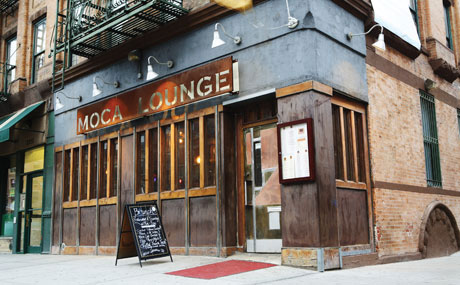
Photo: Francine Daveta
The scene is livelier down the street at Moca Lounge and across town at The Den. Each serves specialty drinks and full menus to a sound track of hip-hop, R & B and reggae along with nights featuring poetry and African American movies.
Harlem's continued development is further evident in Starwood Hotels' plans to open the neighborhood's first luxury hotel in 2010, but until then the area has affordable alternatives for an overnight stay. Among the brownstone turned B & B offerings is The Harlem Flophouse on West 123rd Street.
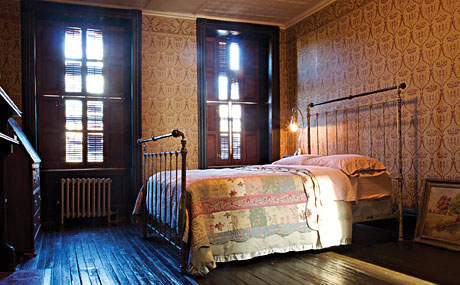
Photo: Mac Brown
Antique style decor lends character to the four room guesthouse, and the friendly staff has the inside story on local must sees, many of which are just steps away from the 1890s era building. Backpackers and budget travelers should trek farther uptown to book a room at the Highbridge House on West 146th Street. This youth hostel's clean dorm style rooms with a kitchenette and full bathroom have nightly price tags that start in the double digits.
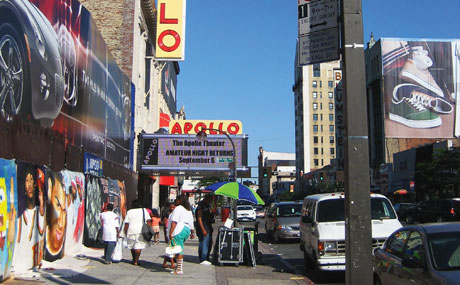
Photo: Kevin Tsui